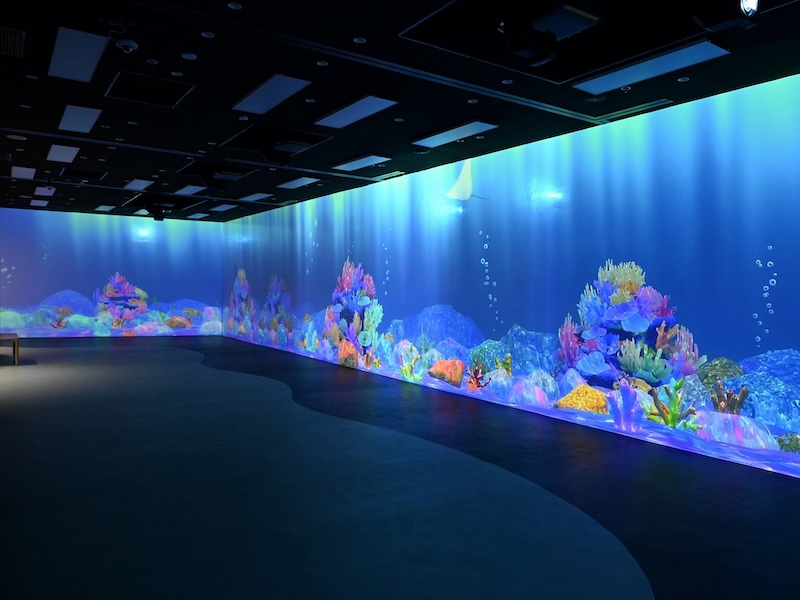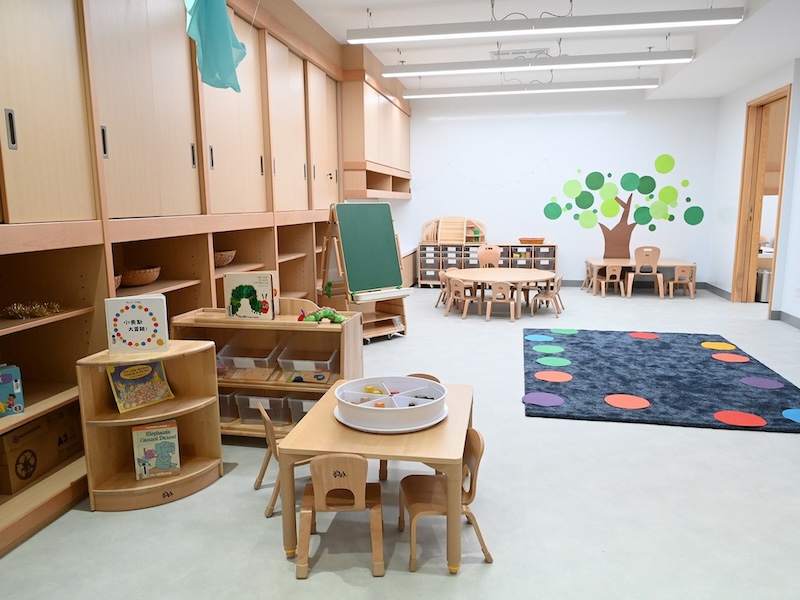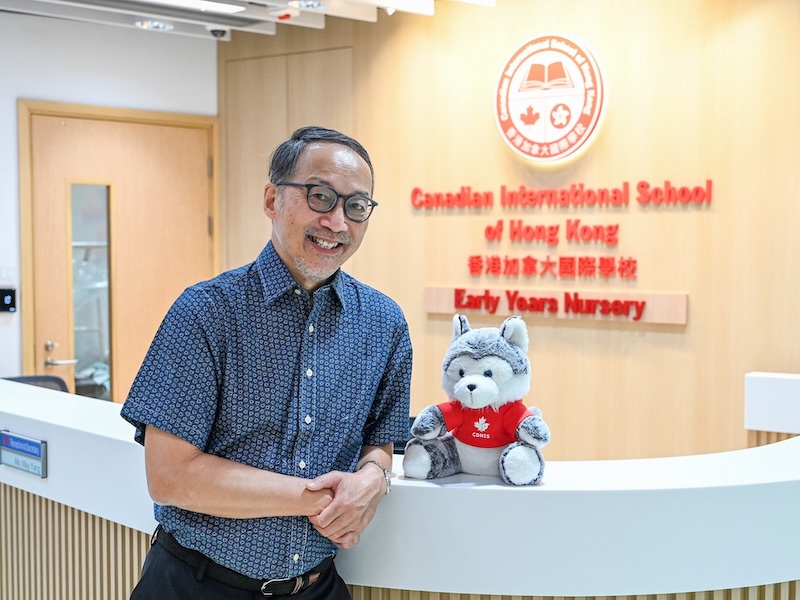The start of the academic year buzz has been especially loud at Canadian International School of Hong Kong (CDNIS.) Here the Early Years Centre at The Southside has opened its doors to its first cohort of learners. We’ve asked Lower School Principal DR WIL CHAN about the new space designed for an early childhood education in Hong Kong.
When we last interviewed you for the magazine, the Early Years Centre was in its first phase of construction – and now it’s about to open! How does it look?
It’s amazing how the Early Years Centre has come together – it couldn’t be better. And that’s not to say we didn’t tweak a few things here and there. But we did that to make it as functional for kids and as teacher-friendly as we could, as those things are key. But we’ve kept pretty true to the core of how we wanted it to look in the planning stage.
The work has really kept me on my toes, and I’ve learnt a lot from the process, which I appreciate. Now I’m ready to focus on the day to-day campus operations while letting the teachers take the reins, because they’re the experts. I can do that very easily and without any reluctance because it is a superb group of teachers that we have brought on board. All of them share our vision and our understanding of how things can be done.

What are some highlights of the space?
I think the highlight for me is how open it is. On paper it can be hard to tell, but I didn’t think the the Early Years Centre would feel this open. There’s so much space! To the extent that we have even invited MLSA (Major League Sports Academy) to introduce mini soccer here. They already serve the main campus, and now they’ll also provide for younger children here. I’m really happy about that.
Also surprising is how integrated the play structure is. Again, while I understood all the concepts behind it, it wasn’t something I could easily visualise in the planning stage. After it was built in Germany and flown over, it was unboxed and constructed and I could immediately see how well it worked. It provides the opportunity for climbing, crawling, stretching, crouching and stepping. Which are wonderful ways to capitalise on all the core and small muscles needed for posture, balance and alignment. And there are small embedded elements of “wonder.” For example like crystal balls and spinning blocks, that add to the fun and intrigue.
Another highlight is how the classrooms interconnect. They all flow so well, and it really allows for a flexible and interactive early childhood education space, with a Chinese teacher in one room and an English teacher in a connected classroom. The collaboration with Japanese digital artists teamLab looks like something the kids are going to love.
Tell us more about the teamLab collaboration.
I was blown away the first time I walked in here and saw their interactive art installations on the wall. And then I was blown away again when teamLab came to train us all on how to use the technology in teaching. This education side of things is actually new to them too, so we have been learning from each other and we’re in constant contact with them now; they have the technicians and code writers, we are the educational arm. It’s a collaboration that has already provided more than I ever expected.
Our initial goal is to showcase four units through the installations. This includes the world of fish and the sea, the animal world, people, and communities (towns). We’re also keen to build some Chinese language-specific content into it.
What’s one specific way these digital walls might work?
One example is to get the kids to colour in a fish, which can then be scanned and dropped into the “ocean” in the art installation. It will then swim around there, and the kids can go looking for the fish. You can then extend the activity to incorporate language acquisition. For example, by having fish with words written on them and build games around that; finding your surname, for example. Early language acquisition is about sight words – beginning with recognising your own name. So, with this installation, the kids can learn that in a fun and intuitive manner. There are endless applications and opportunities with it.
What else are you excited about introducing into CDNIS’s early childhood education in Hong Kong ?
We’re looking forward to inviting parents into the mix, not only because we understand how critical they are to the children’s development, but also because they’re the ones who extend the learning at home. So we’ll be partnering with them in meaningful ways – it might be through cooking, crafting or language. Children will observe how you can be an adult and express your passions and your experience through an expert area. (And kids love to see their parents on campus anyway!) We also want to extend this to grandparents. So we’re looking to host grandparent days, maybe a breakfast where the kids are serving – wouldn’t that be lovely?
There’s also a rich array of vendors in this mall and we’re going to use them in the children’s learning and to develop a sense of community. So, we’ll go to City’Super and get them doing grocery shopping, discovering different fruit and vegetables along the way, reading the boxes, looking for familiar words. And we’ll build relationships with other stores and restaurants, and we’re already partnering with a doctor in the centre. Another exciting one is the Emperor Cinema group. They’re going to open their doors so we can take our kids for a backstage kind of look at the operations and how theatre works. This type of real learning is invaluable.
Beyond that, we have the public food court right next door, as well as the open market and a temple – lots of resources in the area that we can introduce into the school day. And each time we do, we will definitely bring parents or grandparents. Because then the themes and concepts get taken back home for a discussion at dinner time.
What will you enjoy most about the Early Years Centre?
Not to downplay all the very exciting things on and around the campus, but I actually think it will be the teachers. All schools have desks, chairs, screens and the rest, but they don’t all have the same teachers. With an early childhood education and kids of this age, if you can offer those soft skills of love, care and support, while encouraging and nurturing risk-taking – so that they always know there’s an adult there for them – that’s the key. We built this learning and play space through the eyes of two- and three-year-olds. And the most important person in it is that trusted adult.
Nursery applications for for the 2025-26 school year will be accepted from 1 to 30 November 2024. Interested families can stay up to date by submitting an expression of interest via the school’s website.
The CDNIS Early Years Centre is at G21-24, G/F, The Southside, 11 Heung Yip Road, Wong Chuk Hang. Visit cdnis.edu.hk to find out more.
Enjoyed reading about early childhood education in Hong Kong at CDNIS? This article first appeared in the Autumn 2024 issue of Expat Living magazine. Subscribe now so you never miss an issue!




